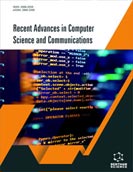Abstract
Methanobrevibacter ruminantium M1 is one of the abundant methanogenic
archaea found in ruminants, which is influential in livestock production by enteric
methane emission. Several methane mitigation strategies have been employed to curtail
enteric methane emissions, most of which have not been successful to date. Hence, it is
imperative to discover new targets for the development of organism-specific vaccines
and inhibitors of methanogenesis. In this study, we predicted the functions and
characterized chemogenomic and vaccine proteins from their operomes using a
combined bioinformatics approach. A precise function of 257 hypothetical proteins was
assigned based on their sequence-structure-function relationships, as evidenced by the
literature. We identified 12 virulence genes and 18 vaccinogenic proteins as reliable
antigenic determinants. The predicted virulence proteins were found to promote the
survival of this organism in the intestine of ruminant animals. The toll-like receptor,
nudix hydrolase, pseudo murein-binding repeat protein, and phosphonoacetate
hydrolase identified in this organism have shown more immunogenic and vaccinogenic
characteristics. Therefore, the new virulence factors and vaccine candidates identified
in this study would provide a quest for new anti-methanogenic drugs to mitigate the
methane emitted in ruminant animals.
Keywords: Hypothetical proteins, Immunoinformatics, Methanobrevibacter, Methanogenesis, Protein function, Vaccine.






















